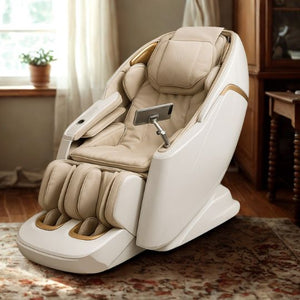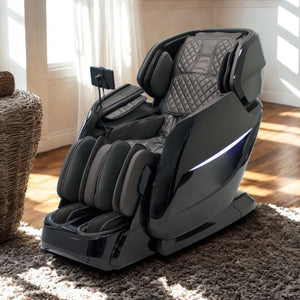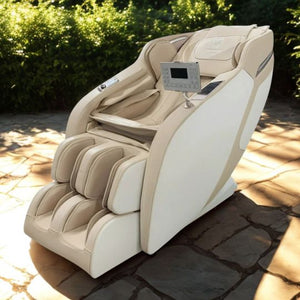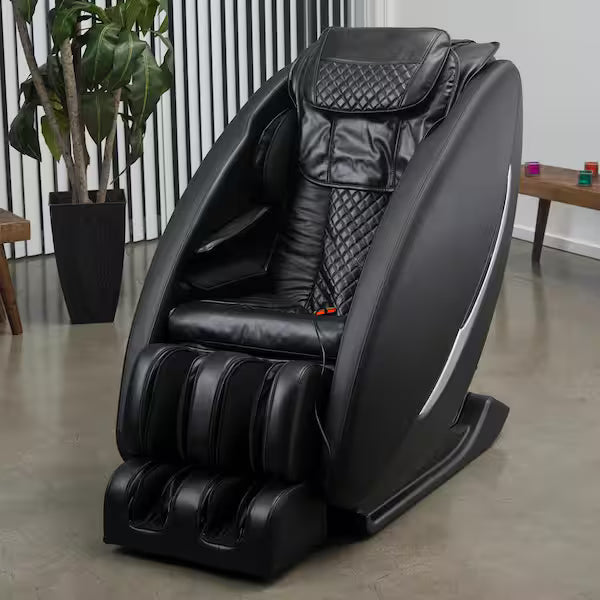Sound Therapy and Massage Chair: Relaxation Duo
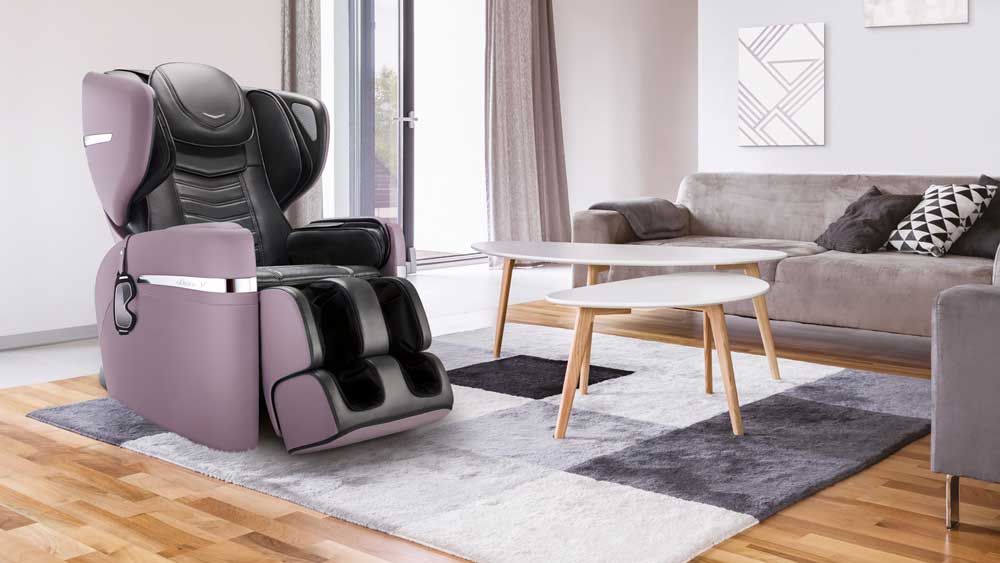
Introduction
In today’s fast-paced world, stress is no longer an occasional visitor; it has become a constant companion. From workplace pressures and digital overload to social responsibilities and personal struggles, people are continuously searching for reliable and holistic solutions to restore balance in their lives. While traditional relaxation methods such as meditation, yoga, and exercise remain effective, modern innovations have introduced new tools that can amplify relaxation and healing. Among these, two powerful modalities stand out: sound therapy and massage chairs.
Individually, both approaches offer immense benefits—sound therapy nurtures the mind and emotions, while massage chairs rejuvenate the body and nervous system. When combined, however, they create a unique synergy that allows individuals to achieve deeper relaxation, improved well-being, and enhanced resilience against stress. This article explores how sound therapy and massage chairs work together, why they form the ultimate relaxation duo, and how this combination is revolutionizing the wellness industry worldwide.
Part 1: Understanding Sound Therapy
1.1 What is Sound Therapy?
Sound therapy is the intentional use of sound frequencies, vibrations, and rhythms to promote healing, relaxation, and balance in the body and mind. This practice is rooted in ancient traditions, from Tibetan singing bowls and chanting in Buddhist temples to the rhythmic drumming of Native American healers. In modern wellness contexts, sound therapy involves instruments like gongs, tuning forks, crystal bowls, or even digitally produced soundscapes designed to target specific brainwave states.
1.2 The Science Behind Sound Therapy
At its core, sound therapy works on the principle of resonance and entrainment. Our brains operate on different wave frequencies—alpha, beta, theta, and delta—that influence our mental state. By listening to carefully tuned sounds, our brainwaves can synchronize with these frequencies, inducing relaxation or heightened focus. For example:
-
Alpha waves (8–12 Hz): Promote relaxation and creativity.
-
Theta waves (4–7 Hz): Associated with deep meditation and emotional healing.
-
Delta waves (0.5–3 Hz): Linked to restorative sleep and cellular repair.
Vibrations also affect the body at a cellular level. Research shows that sound waves can lower blood pressure, reduce cortisol (the stress hormone), and stimulate the vagus nerve, which plays a key role in calming the nervous system.
1.3 Types of Sound Therapy Practices
-
Binaural Beats: Using two slightly different tones in each ear to influence brainwave patterns.
-
Tibetan Singing Bowls: Producing rich vibrations that calm the nervous system.
-
Gong Baths: Immersive sound experiences that release tension.
-
Music Therapy: Using specific melodies or rhythms for emotional regulation.
Part 2: Understanding Massage Chairs
2.1 The Evolution of Massage Chairs
Massage chairs were once considered luxury gadgets available only in spas or elite households. Over the years, however, technology has advanced significantly, making them more accessible and effective. Modern massage chairs are now equipped with AI-driven controls, 4D massage rollers, zero-gravity reclining features, and heating systems that mimic the touch and techniques of professional massage therapists.
2.2 Health Benefits of Massage Chairs
Massage chairs go beyond providing comfort; they deliver medically recognized health benefits such as:
-
Stress Reduction: By lowering cortisol levels and promoting serotonin and dopamine release.
-
Improved Circulation: Kneading motions stimulate blood flow, delivering oxygen to muscles.
-
Pain Relief: Targeted massage reduces stiffness in the neck, shoulders, and lower back.
-
Better Sleep: Relaxed muscles and nerves prepare the body for deeper sleep cycles.
-
Posture Improvement: Stretching programs realign the spine and relieve pressure points.
2.3 Massage Chair Technology and Features
Modern chairs come with advanced programs like:
-
Shiatsu Massage: Applying pressure to specific acupoints.
-
Swedish Massage: Gentle strokes for relaxation.
-
Deep Tissue Massage: Relieving knots and tension.
-
Zero Gravity Recline: Positioning the body to reduce spinal compression.
-
Heat Therapy: Enhancing muscle relaxation.
In regions where wellness and self-care are growing trends, such as Southeast Asia, demand for advanced massage chairs is increasing. For example, those exploring Massage chair Cambodia options are noticing how these chairs combine luxury with health benefits.
Part 3: The Synergy Between Sound Therapy and Massage Chairs
3.1 Why Combine Them?
Sound therapy targets the mind, while massage chairs target the body. Together, they create a holistic experience that restores balance to both. This combination is particularly powerful because stress manifests both mentally (anxiety, racing thoughts) and physically (muscle tension, fatigue). Addressing both simultaneously accelerates recovery and deepens relaxation.
3.2 The Science of Integration
-
Brainwave Entrainment + Physical Relaxation: Sound frequencies guide the brain into a meditative state, while massage chairs release muscle tension, amplifying relaxation.
-
Vagus Nerve Stimulation: Vibrations from sound therapy and massage chairs both activate this nerve, boosting parasympathetic (rest-and-digest) activity.
-
Hormonal Balance: The duo reduces cortisol while enhancing serotonin and melatonin production, improving mood and sleep.
3.3 Real-World Applications
Many wellness centers now integrate massage chairs with guided sound therapy. For instance, clients recline in a chair while wearing headphones that deliver binaural beats. This setup is particularly appealing for urban professionals who want spa-level relaxation at home or office.
In Cambodia, where wellness tourism and modern lifestyle upgrades are gaining traction, more people are seeking Massage chair Cambodia solutions combined with mindfulness and sound therapy practices.
Part 4: Benefits of the Relaxation Duo
4.1 Stress Relief and Mental Clarity
The synchronized benefits of sound and massage create a stress-reducing environment where mental chatter slows down and focus improves. Individuals often report heightened creativity and problem-solving abilities after sessions.
4.2 Improved Sleep Quality
Sound therapy encourages delta brainwaves, while massage chairs prepare the body for rest. Together, they reduce insomnia and promote longer, restorative sleep cycles.
4.3 Emotional Healing
Sound frequencies resonate with emotional centers of the brain, releasing trapped emotions. Simultaneously, physical relaxation from massage chairs reduces somatic tension caused by stress and trauma.
4.4 Pain and Muscle Recovery
For athletes or those with chronic pain, massage chairs reduce inflammation and stiffness, while sound therapy reduces the perception of pain by altering brainwave activity.
4.5 Accessibility and Convenience
Unlike traditional spa visits that require appointments and travel, having this duo at home allows people to engage in daily wellness routines. Brands introducing Massage chair Cambodia options are making this lifestyle more accessible to local households.
Part 5: Practical Ways to Use the Duo
5.1 Creating a Relaxation Ritual at Home
-
Choose a quiet room and dim the lights.
-
Recline in a massage chair and select a gentle massage program.
-
Put on noise-canceling headphones.
-
Play a curated sound therapy track—such as binaural beats, Tibetan bowls, or ambient nature sounds.
-
Focus on slow breathing for 15–30 minutes.
5.2 Workplace Wellness
Some companies have introduced wellness corners featuring massage chairs and sound therapy pods. This allows employees to recharge quickly, improving productivity and morale.
5.3 Wellness Tourism and Hospitality
Hotels and resorts are increasingly adopting wellness technologies. Guests in Cambodia, for example, may soon find Massage chair Cambodia options paired with sound therapy as part of luxury relaxation packages.
Part 6: Expert Opinions and Research
6.1 Medical Insights
Doctors highlight that stress-related illnesses such as hypertension, digestive disorders, and migraines can be alleviated by practices that combine physical and mental relaxation. Studies on massage chairs show measurable reductions in blood pressure and muscle tension, while sound therapy research confirms its effectiveness in lowering anxiety.
6.2 Psychological Insights
Psychologists note that combining sensory experiences enhances emotional regulation. Sound engages auditory pathways while massage stimulates tactile pathways, creating a multi-sensory healing effect.
6.3 Future Trends
With the growth of AI, future massage chairs may integrate built-in sound therapy features, adjusting frequencies based on the user’s heart rate and stress levels in real time.
Part 7: Choosing the Right Massage Chair for Sound Therapy
When selecting a massage chair to pair with sound therapy, consider:
-
Comfort: Adjustable recline and cushioning.
-
Technology: 4D massage rollers, heating options, and zero-gravity support.
-
Connectivity: Bluetooth or speaker systems to play sound therapy tracks directly.
-
Durability: Quality materials suited for long-term use.
-
Regional Availability: For residents exploring Massage chair Cambodia, local suppliers now offer international-standard chairs at competitive prices.
Part 8: Conclusion
Sound therapy and massage chairs represent the meeting point of ancient wisdom and modern technology. Sound nourishes the mind, while massage chairs heal the body, and together they create a powerful duo for relaxation, healing, and overall well-being. Whether for individuals seeking peace in their homes, corporations aiming to improve employee wellness, or wellness centers looking to innovate, this combination has limitless potential.
As wellness continues to shift from luxury to necessity, the integration of sound therapy with massage chairs is set to become a cornerstone of modern relaxation practices. For those considering adopting this lifestyle upgrade, especially in Southeast Asia, exploring Massage chair Cambodia options is an excellent starting point for embracing holistic well-being.

